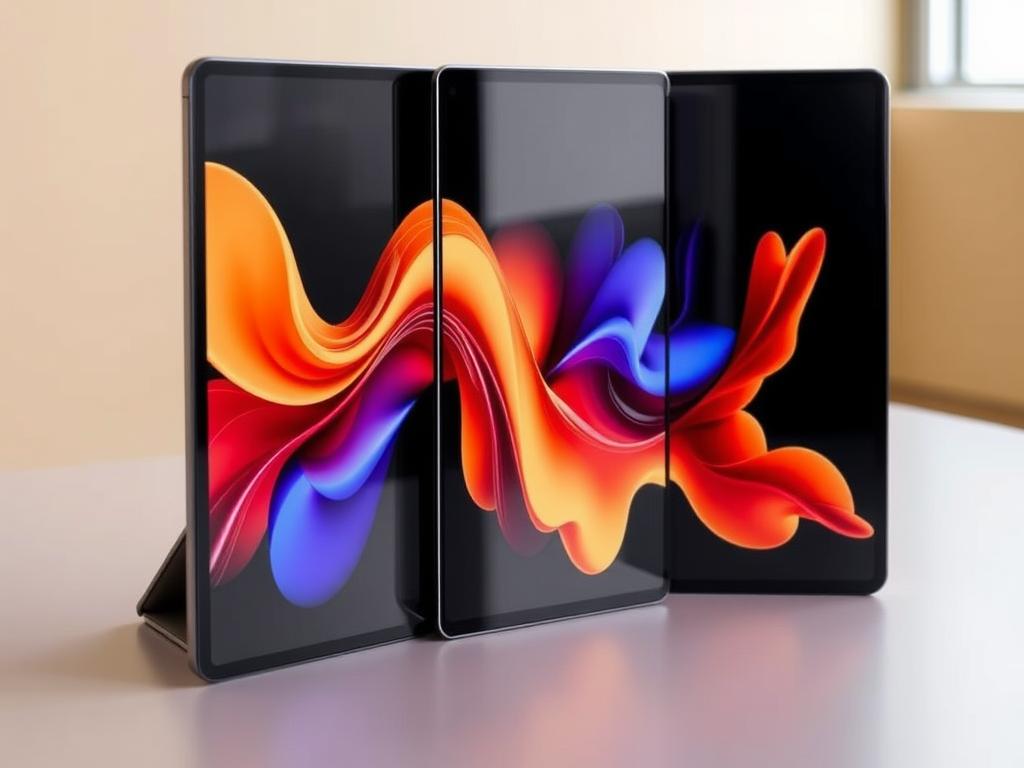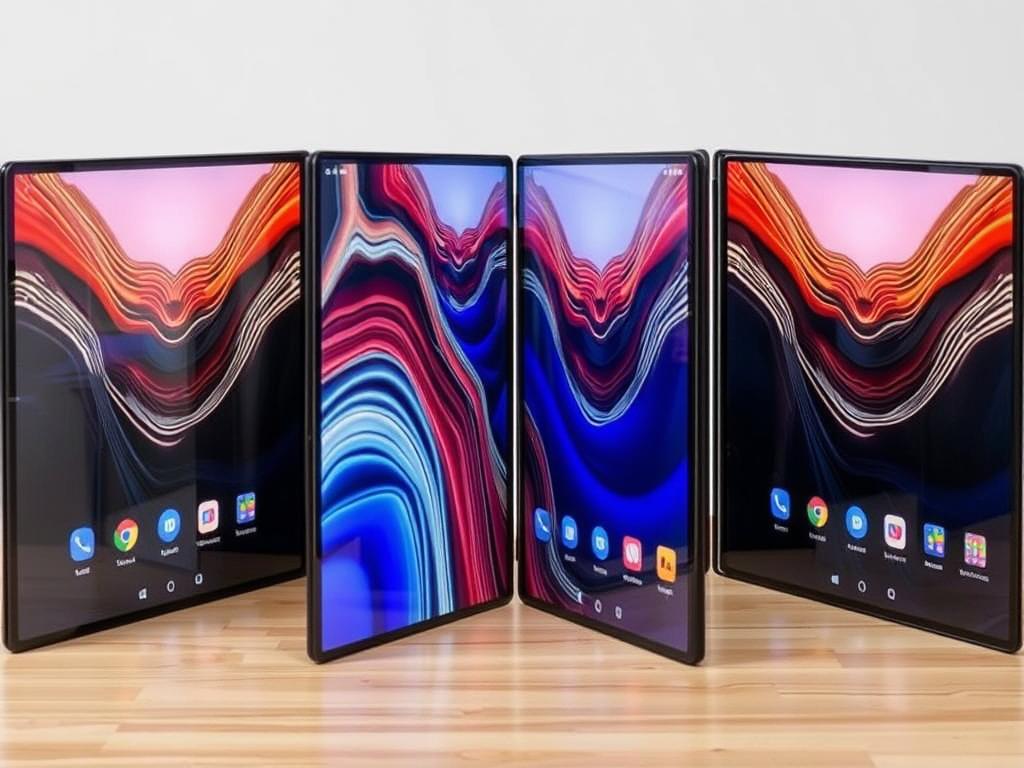The tech industry is always buzzing with the next big thing, and in recent years, foldable screens have stolen much of the spotlight. Phones, tablets, and even laptops now come with displays that can bend, fold, or flip, promising to transform how we interact with our devices. But the question remains: are foldable screens a genuine innovation that will shape the future of technology, or are they just a flashy gimmick designed to catch our eye and empty our wallets? In this article, we’ll dive deep into the world of foldable screens, exploring their history, technology, benefits, challenges, and what the future might hold.
The Rise of Foldable Screens: A Brief History
Foldable screens aren’t something that popped up overnight. The idea has been around for over a decade, with early prototypes and patents dating back to the 2010s. These early attempts showed potential but were hampered by expensive production costs, fragile materials, and limited functionality. It wasn’t until 2019 that major brands like Samsung and Huawei started widely releasing foldable smartphones, capturing mainstream attention. The foldable screen market has since expanded rapidly, with more devices offering various fold types: book-style, flip-style, and even rollable displays.
What makes foldable screens so interesting is the underlying technology that enables a flexible display. Unlike traditional rigid glass screens, foldable displays utilize materials like flexible OLED (organic light-emitting diode) panels. These flexible substrates can bend without cracking, making the foldable design possible. Still, manufacturing these displays remains complex and costly, which explains why foldable devices typically come with premium price tags.
How Foldable Screens Work: The Technology Behind the Magic
To appreciate foldable screens, it’s helpful to understand the technology at their core. Traditional smartphone screens consist of rigid glass layers protecting LCD or OLED panels. In contrast, foldable screens replace rigid glass with ultra-thin flexible plastic layers, offering both transparency and durability.
Materials and Structure
The main technological breakthroughs include:
- Flexible OLED Panels: Using organic compounds, these screens emit light when an electric current passes through and can be printed on thin, bendable plastic substrates.
- Plastic or Ultra-Thin Glass Cover Layers: Instead of normal glass, which cracks easily, some devices use plastic or ultra-thin glass designed to withstand multiple folds without breaking.
- Hinges and Mechanical Components: Innovative hinges allow the display to fold smoothly, while minimizing stress on the screen itself.
These elements combined let foldable screens maintain high resolution and brightness while bending and folding—though the durability and feel are still different from traditional screens.
Benefits of Foldable Screens: Why They Matter

From a consumer standpoint, foldable screen devices promise several exciting benefits. The main one is screen real estate. Imagine having a device that fits comfortably in your pocket like a smartphone but unfolds into a larger tablet-sized screen, perfect for browsing, gaming, or working.
- Versatility: Foldable devices can switch between compact and expanded modes for different tasks.
- Multitasking: Larger screens encourage split-screen functions and smoother multitasking, which is great for productivity.
- Portability: Unlike tablets or laptops, foldable phones are designed to be pocketable but still offer big-screen experiences on demand.
- Innovation Appeal: These devices showcase cutting-edge technology, making them attractive for early adopters and tech enthusiasts.
For professionals and creatives, foldable screens can become a game changer. The larger display areas facilitate drawing, designing, reading, and video editing without needing multiple devices. Moreover, foldable laptops or tablets also bring benefits in the realm of portable computing, where lightweight and flexible devices are desired.
Challenges and Limitations: The Gimmick Arguments
Despite the excitement, foldable screens are not without their drawbacks, and critics argue that many foldable devices are more gimmick than truly useful technology.
Durability and Cost Concerns
One of the biggest challenges is durability. Foldable screens, often covered by plastic instead of traditional glass, can scratch, crease, or degrade faster. While manufacturers have improved screen longevity, the average lifespan still lags behind regular smartphones. Expensive repairs and the initial premium cost also deter many consumers.
Software Optimization

Another hurdle is software. To unlock the potential of foldable screens, apps and operating systems must adapt to different screen sizes, orientations, and folding states. While progress has been made—especially with Android’s foldable-friendly software—some apps still struggle to adjust seamlessly, which can limit user experience.
Bulkiness and Weight
Despite their promise, foldable phones or laptops tend to be thicker and heavier than traditional devices, making them less comfortable for everyday use. The hinge mechanism adds weight and complexity, sometimes compromising design elegance.
Types of Foldable Screens: A Variety of Designs

The foldable screen market is far from one-size-fits-all. Different manufacturers experiment with various folding styles, each with unique advantages and user experiences.
| Fold Type | Description | Examples | Pros | Cons |
|---|---|---|---|---|
| Book Fold | Folds inward like a book, doubling screen size when unfolded. | Samsung Galaxy Z Fold Series | Large screen for multitasking, versatile use. | Heavier and thicker; crease visible on screen. |
| Flip Fold | Clamshell style folds vertically, making a compact phone. | Motorola Razr, Samsung Galaxy Z Flip | Compact when folded, nostalgic design. | Smaller screen; less multitasking ability. |
| Rollable | Display rolls or extends from inside the device. | Concept models from LG, TCL | Smooth expansion with no fold crease. | Still experimental; expensive and rare. |
Each style caters to different needs and preferences. While book fold designs focus on expanding display size and productivity, flip folds blend nostalgia and style with portability. Rollable screens remain a future vision with much promise but limited availability.
The Future of Foldable Screens: What’s Next?
Despite current limitations, foldable screen technology continues evolving rapidly. Manufacturers invest heavily in improving durability, reducing thickness, and perfecting hinge mechanisms. Advances in materials science may eventually replace plastic covers with ultra-durable, flexible glass that feels and performs like traditional screens. Software ecosystems will also mature, with seamless app support and more intuitive multitasking features.
Additionally, foldable screen technology could expand beyond consumer gadgets. We might see foldable displays in wearable tech, automotive dashboards, and smart home devices, integrating greater flexibility into our daily lives.
Innovations such as rollable and stretchable displays, combined with artificial intelligence-powered interfaces, promise a future where devices fit any environment or user need. The question is not whether foldable screens will survive but how they will evolve and find their place among mainstream technology.
Conclusion
So, are foldable screens an innovation or just a gimmick? The answer lies somewhere in between. Foldable screens represent a genuine technological breakthrough that offers new ways to use devices, blending portability and large display capabilities in a single gadget. However, challenges related to durability, cost, software adaptation, and device bulk cannot be overlooked. While early models might feel like novelties or marketing tools, the continuing improvements suggest foldable screens have the potential to revolutionize our interaction with technology in the coming years. As materials develop and software catches up, foldable devices will likely become more practical, affordable, and essential, transforming from a cool gimmick into a true innovation that changes how we work, play, and connect every day.




